It was a call from a reporter that first made ecologist Jason Hoeksema think things had gone too far. The journalist was asking questions about the wood wide web — the idea that trees communicate with each other through an underground fungal network — that seemed to go well beyond what Hoeksema considered to be the facts.
Hoeksema discovered that his colleague, Melanie Jones, was becoming restive as well: her peers, she says, “had been squirming for a while and feeling uncomfortable with how the message had morphed in the public literature”. Then, a third academic, mycorrhizal ecologist Justine Karst, took the lead. She thought speaking out about the lack of evidence for the wood wide web had become an ethical obligation: “Our job as scientists is to present the truth, as close as we can get to it”.
Their concerns lay predominantly with a depiction of the forest put forward by Suzanne Simard, a forest ecologist at the University of British Columbia in Vancouver, in her popular work. Her book Finding the Mother Tree, for example, was published in 2021 and swiftly became a bestseller. In it she drew on decades of her own and others’ research to portray forests as cooperating communities. She said that trees help each other out by dispatching resources and warning signals through fungal networks in the soil — and that more mature individuals, which she calls mother trees, sometimes prioritize related trees over others.
The idea has enchanted the public, appearing in bestselling books, films and television series. It has inspired environmental campaigners, ecology students and researchers in fields including philosophy, urban planning and electronic music. Simard’s ideas have also led to recommendations on forest management in North America.
It takes a wood to raise a tree: a memoir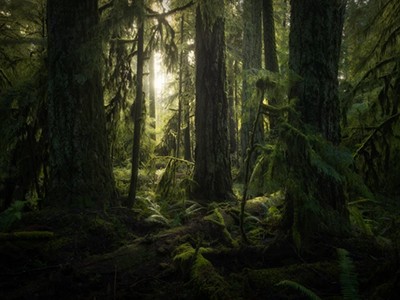
But in the ecology community there is a groundswell of unease with the way in which the ideas are being presented in popular forums. Last year, Karst, at the University of Alberta in Edmonton, Canada; Hoeksema, at the University of Mississippi in Oxford; and Jones, at the University of British Columbia in Kelowna, Canada, challenged Simard’s ideas in a review1, digesting the evidence and suggesting that some of Simard’s descriptions of the wood wide web in popular communications had “overlooked uncertainty” and were “disconnected from evidence”. They were later joined by other researchers, including around 30 forest and fungal scientists, who published a separate paper that questioned the scientific credibility2 of two popular books about forests — one of them Simard’s — saying that some of the claims in her book “do not correctly reflect, and even contradict, the data”. The article warns of “the perils of plant personification”, saying that the desire to humanize plant life “may eventually harm rather than help the commendable cause of preserving forests”. Another review of the evidence appeared in May last year3.
Simard, however, disagrees with these characterizations of her work and is steadfast about the scientific support for her idea that trees cooperate through underground fungal networks. “They’re reductionist scientists,” she says when asked about criticism of her work. “They’ve missed the forest for the trees.” She is concerned that the debate over the details of the theory diminishes her larger goal of forest protection and renewal. “The criticisms are a distraction, to be honest, from what’s happening in our ecosystems.”
Robert Kosak, dean of the faculty of forestry at the University of British Columbia, supports Simard and calls her “a world-renowned scientist, a strong advocate for science-based environmental solutions, an amazing communicator, mentor, and teacher, and a wonderful colleague”.
The dispute offers a window into how scientific ideas take shape and spread in popular culture — and raises questions about what the responsibilities of scientists are as they communicate their ideas more widely.
Conversation starter
In her book, Simard tells of an idyllic childhood, with summers spent in the ancient forests of British Columbia. While an undergraduate, she worked at a forestry company, witnessing clear-cut logging at first hand. The experience set the course of her career. On graduating, she took a government forest-service post, and joined the University of British Columbia in 2002. She still works there, running a research programme called the Mother Tree Project, which develops sustainable forest-renewal practices.
One of Simard’s earliest papers appeared in Nature4 in 1997, describing evidence that carbon could travel underground between trees of different species, and suggesting that this could be through an underground fungal network. Nature put the paper on its cover and dubbed the idea the wood wide web — a term that quickly caught on and is now widely used to describe the idea (Nature’s news team is editorially independent of its journal team).
Tree leaves turn sunshine and carbon dioxide into sugars, and some of this flows to their roots and into mycorrhizal fungi, which grow into the root tip and donate water and nutrients in return. There was already evidence, from a laboratory study5, that carbon can move through the tendrils of the fungi that link seedling roots together. But Simard’s approach, a controlled experiment in clear-cut forest, was “groundbreaking”, says David Johnson, who studies the ecology of soil microbes at the University of Manchester, UK.
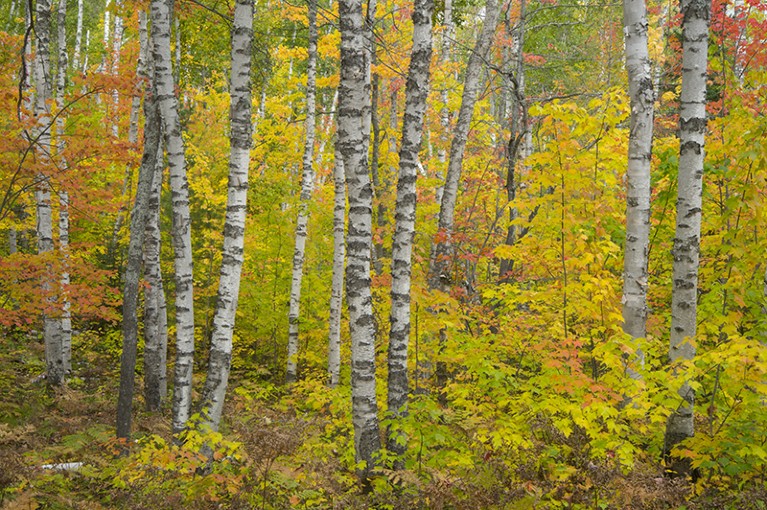
Forest ecologist Suzanne Simard’s 1997 study looked at carbon transfer between Douglas fir (Pseudotsuga menziesii) and paper birch trees (Betula papyrifera, pictured).Credit: Steve Gettle/Nature Picture Library
She planted pairs of seedlings — one paper birch (Betula papyrifera) and one Douglas fir (Pseudotsuga menziesii) — close to one another. She shaded the Douglas fir to prevent it from manufacturing sugars. Then she bathed the air surrounding each seedling with traceable, labelled carbon dioxide. She found carbon in sugars made by the birch in the needles of the shaded Douglas fir. Smaller quantities of sugars from the fir were found in the birch.
A third seedling in each group — western red cedar (Thuja plicata) — which is not colonized by the same types of mycorrhizal fungi, absorbed less carbon than did the other seedlings. The results, the authors concluded4, suggest that carbon transfer between birch and Douglas fir “is primarily through the direct hyphal pathway”. That is, there could be an active fungal pipeline connecting the roots of both trees.
Over the years, Simard and other researchers developed in published work the idea that there could be a common mycorrhizal network in the forest soil, connecting many trees of the same and different species.
About a decade ago, Simard began to take the idea further, and into the media. In a short film called Mother Trees Connect the Forest, she said of forest trees: “These plants are really not individuals in the sense that Darwin thought they were individuals competing for survival of the fittest. In fact, they’re interacting with each other, trying to help each other survive.”
In 2016, in a TED talk that has had more than 5.6 million views, she portrayed forest trees as “not just competitors” — competition being foundational to the understanding of how ecosystems work — “but as cooperators”. Her 1997 experiment, she said, had revealed evidence for a “massive underground communications network”. Her later work, she added in the TED talk, found that some bigger, older “mother trees”, as she called them, are particularly well connected. They nurture their young — preferentially sending them carbon and making space for them in their root systems. What’s more, “when mother trees are injured or dying, they also send messages of wisdom on to the next generation of seedlings.”
Then came her book — a memoir and detailed account of her work. It has been praised for its vivid and personal depiction of the scientific life.
The book concludes that to escape environmental devastation, humans should adopt attitudes to nature that are similar to those of Indigenous people. “This begins by recognizing that trees and plants have agency,” she writes.
Simard has worked to change forestry practices in North America in line with her ideas, for example by sparing the oldest trees during clear-cutting so that they can provide an infrastructure for the next generation of planted trees.
Challenging ideas
But academics were increasingly concerned that the ideas and the publicity that they were attracting had moved beyond what was warranted by the scientific evidence.
The disquiet came to a head when the 2023 scientific review1 was published. The authors, Hoeksema, Jones and Karst, have all collaborated scientifically with Simard in the past; Jones was an author of the 1997 paper. The review considers the evidence for popular claims made about the wood wide web.
‘We are killing this ecosystem’: the scientists tracking the Amazon’s fading health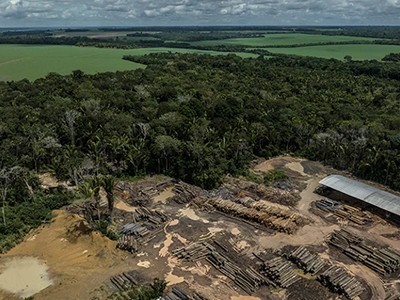
Their review has drawn praise for its scholarship. It is “the gold standard of how one should tackle a contentious and important field”, says James Cahill, who studies plant behaviour at the University of Alberta.
Simard takes the opposite view: the paper, she says, fails to see the bigger picture, and its prominence is “an injustice to the whole world”.
The review laid out what the authors regard as the three key claims underlying the popular idea of the ‘mother tree’: that networks of different fungi linking the roots of different trees — known as common mycorrhizal networks (CMNs) — are widespread in forests; that resources pass through such networks, benefiting seedlings; and that mature trees preferentially send resources along the networks to their kin. The scientists concluded that the first two are insufficiently supported by the scientific evidence, and that the last “has no peer-reviewed, published evidence”.
Some elements of the wood-wide-web idea are not in dispute, they say. For instance, mycorrhizal fungi can latch onto multiple roots of the same plant; one species of fungus can connect with the roots of different species of plant; and mycelia — a cobweb of fungal tendrils — can spread over large distances.
But evidence for a CMN in trees — one in which an individual fungus links the roots of the same or different tree species — is patchy, the review authors say. There are well-documented CMNs that link certain plants together: some orchids use CMNs to connect with trees, for instance, so that the orchids can feed on tree sugars when they can’t make their own.
And lab studies have shown that a single fungus can link seedlings of different tree species. But, the authors say, the lab studies compare with the forest in the same way that human cells grown in a dish compare with human bodies.
The review authors found that the strongest evidence for a CMN among trees in the field comes from five studies published between 2006 and 2020 — some led by ecologist Kevin Beiler, when he was a PhD student in Simard’s group. Beiler, who is now at the University for Sustainable Development in Eberswalde, Germany, used DNA techniques to map the networks of genetically distinct fungi in patches of old-growth forest, and found that they linked many trees of different ages, all Douglas fir — and the larger the tree, the greater the extent of its connections.
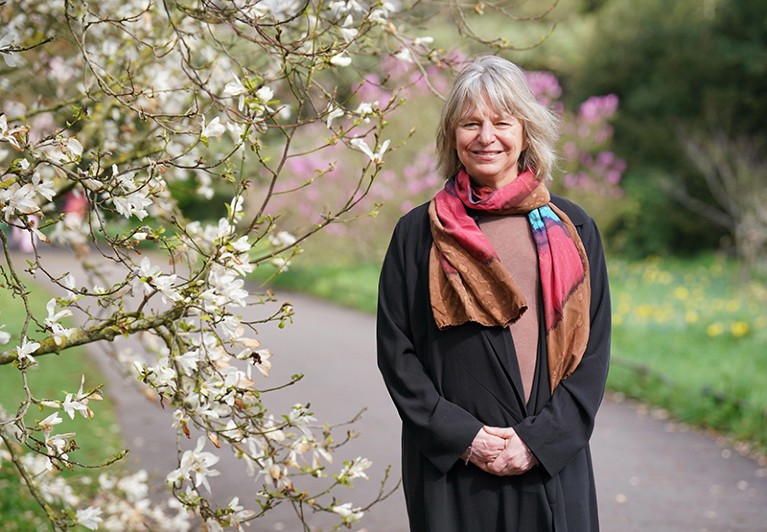
Suzanne Simard is the scientist most closely associated with the idea of the ‘wood wide web’.Credit: PA Images/Alamy
But Karst says that this doesn’t prove that the fungus was simultaneously connecting different trees, because mycelia decay easily and the technique would have picked up strands that are defunct, as well as alive. And that arduous mapping exercise has been repeated for just two tree species — hardly grounds for generalization, she says.
So, do these common networks exist? “The consensus seems to be they are probably there but we do need more people to go out and map them at a fine scale to show that,” says Jones.
The second claim explored by the review is that resources travel through the CMN and benefit seedlings. It has three parts. The first — that resources do, by some means, travel through the soil between plants, commands some support, say the review authors. For example, they highlight research in a Swiss forest in which the canopies of certain trees had been bathed in labelled carbon dioxide. The experiment showed that carbon ended up in the roots of nearby trees.
But the authors say that proving the second two parts of the claim — that a CMN is the major conduit, and that seedlings typically benefit — is tricky. Lab and field studies often cannot rule out that resources moved through the soil for at least part of the way. The review highlighted three lab studies that directly observed carbon moving from one tree seedling to another through a mycorrhizal link, and these “are still the best evidence for the movement of resources within a CMN formed by woody plant species”, say the authors.
In the forest, the authors found 26 experiments reporting carbon transfer, but for each transfer, there was an alternative explanation for how the carbon travelled.
Some studies don’t look for a CMN but simply assess whether growing a seedling next to an adult tree improves its performance. For every instance in which a seedling benefited, the review states, there was another study in which its growth was inhibited. The results are “a huge smear from positive effects to negative effects and mostly neutral”, says Hoeksema.
The third claim is that mature trees communicate preferentially with offspring through CMNs, for example sending warning signals after an attack.
“When I heard that out in public I thought ‘Holy cow, that’s extraordinary’,” says Karst.
The team did find one lab experiment, published in 2017 and led by Brian Pickles, who did the work as a postdoc in Simard’s department, that found that if seedlings were related then more carbon was transferred between them. But it happened in only two of the four lineages of seedlings, and it happened even when fungi were prevented from making links with each other — suggesting that one fungus exuded it into the soil and the other picked it up, the researchers say. In the review, the authors write that, for the third claim, “there is no current evidence from peer-reviewed, published field studies”.
We must get a grip on forest science — before it’s too late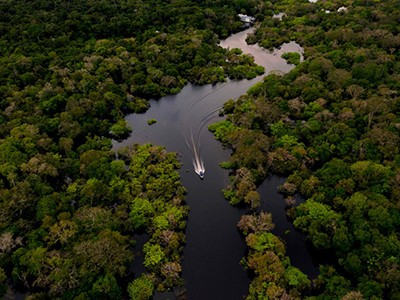
Karst says that one reason why ideas about mother trees and their kin have traction in the public domain is that Simard, in media interviews and her book, has implied that findings made in the greenhouse were actually made in the forest, making the evidence seem stronger than it is. Simard disagrees. “I do not, and would never, imply anything misleading when presenting research.”
Karst gives the example of a passage from Simard’s book that describes a visit to a field site made by Simard and her master’s student, Amanda Asay. In October 2012, Asay was exploring a question that is important for forestry — do seedlings stand a better chance of survival if they grow near their mother tree, and, if so, is this because they receive preferential help through a common mycorrhizal network? Asay had blocked such connections in control seedlings by planting them in mesh bags with pores too small for fungi to fit through. What she found in that forest experiment, Simard says in her book, matched the theory that trees help their kin through networks. “Seedlings that were [the mother tree’s] kin survived better and were noticeably bigger than those that were strangers linked into the network, a strong hint that Douglas-fir mother trees could recognize their own.” Yet, when the review authors accessed Asay’s master’s thesis6, they found that her field work had discovered the opposite: that more non-kin seedlings survived than did kin (although the trend was not significant). As for the role of networks, the thesis states: “Our hypothesis that kin recognition is facilitated by mycorrhizal networks, however, was not supported”.
When asked about the discrepancy, Simard says that Asay also did greenhouse experiments for her master’s thesis, which used pairs of older and younger tree seedlings, and showed that older seedlings recognized younger kin and sent them more resources than they did to non-kin. After that, Asay and others in the team did find evidence that “there are responses that clearly show kin selection in those trees”.
Simard says that, when describing Asay’s findings in the forest in 2012, she made a writer’s choice to situate other findings as if they were discovered in the forest on that day. “I situated the story in the field, because that’s where the question came from.” That description, she says, encompasses “the whole body of work”.
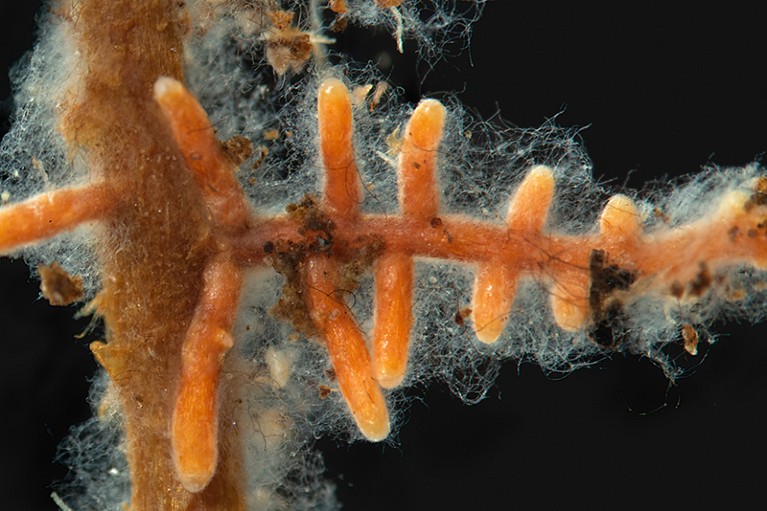
A spruce tree root with ectomycorrhizal fungi.Credit: Eye of Science/Science Photo Library
Asay’s subsequent work has not yet been published, for a tragic reason: she died in an accident in 2022. Her death was devastating for the group and publication stalled, Simard says. “We’re about to publish those papers,” she says.
Karst, Jones and Hoeksema’s overall conclusion is that CMNs do exist in the plant kingdom, and that resources can travel along them, benefiting at least one party, and sometimes both. In the forest, myriad mycelia extend through the soil that are capable of linking with trees, including those of different species. Whether they form a live thoroughfare, and whether resources travel through it between trees, has yet to be demonstrated in the field. Whether there are, in general, kin effects between plants was beyond the scope of their review, but the authors found nothing to support the idea that forest trees target kin through common mycorrhizal networks.
Their review also looked at the literature and found that some scientists have selectively cited and quoted from studies, boosting the credibility of the idea. The main problem, the review concludes, is not the quality of the science. “The most concerning issue is the rigour with which the results of these studies have been transmitted and interpreted.”
Rigour and reaction
Most of the response to the review has been positive, says Jones. “We got a lot of letters saying ‘thank you for doing that, it’s such a relief’. But I was really surprised how many of our colleagues said ‘you are brave’. That shouldn’t be, that you would have to be brave.”
But some researchers have taken issue with aspects of the review. Johnson disagrees with the team’s decision to exclude evidence for similar networks elsewhere in the plant kingdom, including between orchids and trees, and in grasslands and heathlands. It means, he says, they were “ignoring 90% of the work … our default position should be that we should expect mycorrhizal fungi to connect many plants”. It’s important, he says, to take a collective view of the evidence.
He agrees with the conclusion, however, that Simard’s idea of the cooperating forest is incompatible with evolutionary theory. “It’s all about the plants supporting each other for these altruistic reasons. I think that’s completely rubbish.”
Johnson’s view is that it “makes complete sense” that there are CMNs linking multiple forest trees and that substances might travel from one to another through them. Crucially, he says, this is not due to the trees supporting one another. A simple explanation, compatible with evolutionary theory, is that the fungi are acting to protect the trees that are their source of energy. It is beneficial for fungi to activate a tree’s defence signals, or to top up food for temporarily ailing trees. Pickles, who spent six years working with Simard before moving to the University of Reading, UK, says Simard’s ideas are not incompatible with competition, but give more weight to well-known phenomena in ecology, such as mutualism, in which organisms cooperate for mutual benefit. “It’s not altruism. It’s not some outrageous idea,” he says. “She certainly focuses more on facilitation and mutualism than is traditional in these fields, and that’s probably why there’s a lot of pushback.”
Other ecologists agree that there is some “polarization” in ecology between cooperative and competitive ideas. “The idea that perhaps not everything is trying to kill everything else is helpful,” says Katie Field, who studies plant-soil processes at the University of Sheffield, UK.
Regardless of the differences of opinion, Pickles says, “It’s good to have this rigorous analysis.”
Frustrating debate
Simard is exasperated by the debate.
Her work, she says, has “changed our whole world view of how the forest works”. There are now “dozens and dozens” of people “who have found that stuff moves through networks and through the soil”.
She says that the quality of her science has been unfairly challenged. To say that her 200 published papers are “not valid science, which I think is what they’re saying … that it was wrong … is not right,” she says. She is in the process of submitting responses to the critical papers to two journals, she says.
She says that she is unfairly accused of claiming CMNs are the only pathway for resources to travel between trees, and that she acknowledges other pathways in her papers and her book.
In media appearances, it’s hard to make that clear, she says: “It’s a very short period of time, and I don’t get into all those other evolutionary reasons for these things.”
Simard maintains that her critics attack her in the academic literature for imagery she has used only in public communication: “I talked about the mother tree as a way of communicating the science and then these other people say it’s a scientific hypothesis. They misuse my words.”
She argues that changing our understanding of how forests work from ‘winner takes all’ to ‘collaborative, integrated network system’ is essential for fixing the rampant destruction of old-growth forest, especially in British Columbia, where her research has focused. Indigenous cultures that have a more sustainable relationship with forests have mother and father trees, she says — “but the European male society hates the mother tree … somebody needs to write a paper on that”.
“I’m putting forward a paradigm shift. And the critics are saying ‘we don’t want a paradigm shift, we’re fine, just the way we are’. We’re not fine.”
Simard also says that Karst held a position partially funded by members of Canada’s Oil Sands Innovation Alliance that constitutes a conflict of interest. Extraction of oil deposits is associated with forest loss and environmental damage, and Karst was studying land reclamation after extraction. Karst says that she held this position until 2021, terminating it before starting work on the review, and that the work it funded did not overlap with the focus of the review on mycorrhizal networks.
Taking the research forwards will be challenging, says Johnson. Karst and her colleagues have produced an agenda for future field research — from mapping the genotypes of trees and fungi in a range of forests to using controls in experiments more stringently. But the agenda doesn’t impress Johnson. “It’s almost impossible to fulfil,” he says, partly because fieldwork is so fiendishly difficult.
Some scientists say that Simard’s popular work has had a positive influence on the field, even if elements of it remain controversial. Her work propelled the mycorrhizal research community from an obscure and underfunded field to one that excites the public, says Field. That has unleashed funding, stimulated researchers’ imaginations and influenced research agendas.
The backlash has further energized the community, she says. There are plans for a special edition of a journal she edits, and sessions have been added to the upcoming meeting of the International Mycorrhizal Society. All of this is helpful, says Field. “Anything that makes people think again and look again at the evidence is good.”

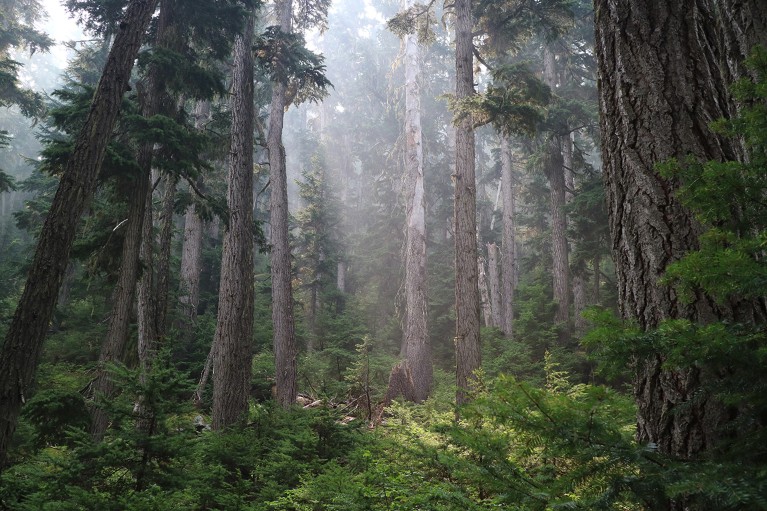
 It takes a wood to raise a tree: a memoir
It takes a wood to raise a tree: a memoir
 ‘We are killing this ecosystem’: the scientists tracking the Amazon’s fading health
‘We are killing this ecosystem’: the scientists tracking the Amazon’s fading health
 We must get a grip on forest science — before it’s too late
We must get a grip on forest science — before it’s too late
 Searching for intelligence in the Wood Wide Web
Searching for intelligence in the Wood Wide Web








